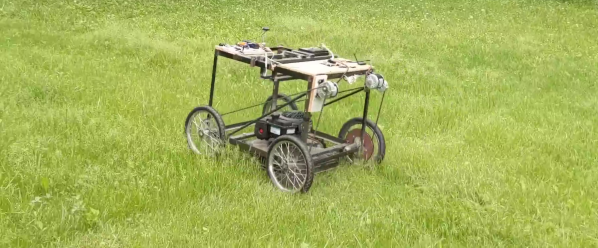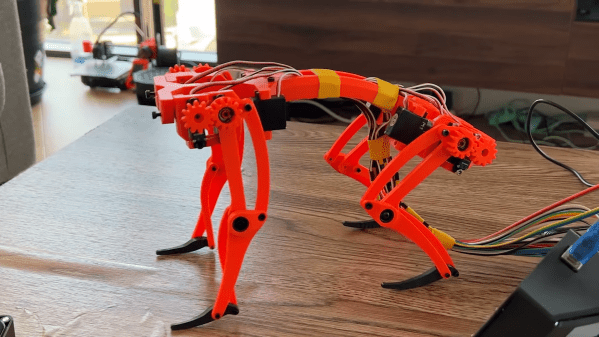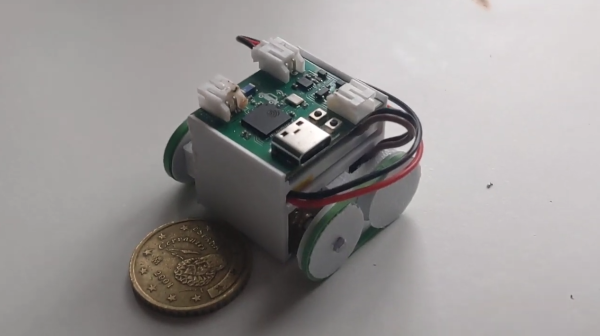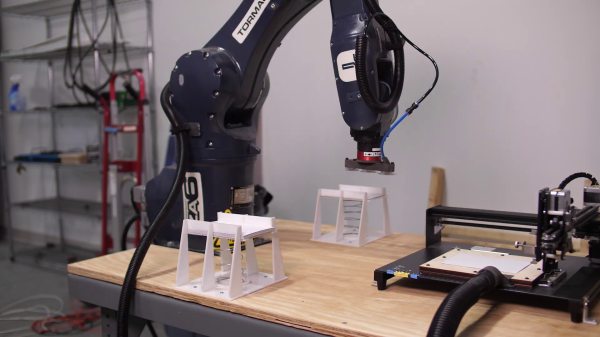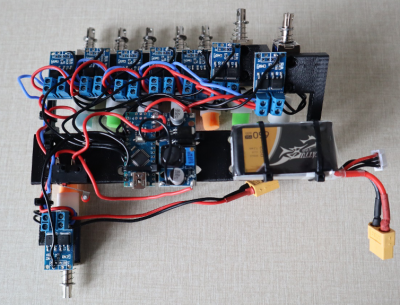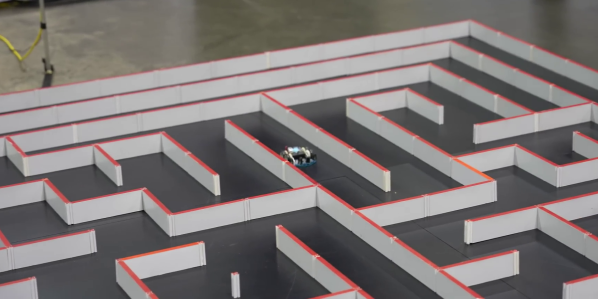[Nathan] needed an autonomous mower to help on the farm, so he built his own without breaking the bank. It might not be the prettiest machine, but it’s been keeping his roads, fences and yard clear for over a year. In the video after the break, he gives a detailed breakdown of its build and function.
It’s built around a around a simple angle-iron frame with a normal internal combustion push mower at it’s core. 18″ bicycle-type wheels are mounted at each corner, each side driven by an e-bike motors via long bicycle chains. Nathan had to add some guards around his wheel sprockets to prevent the chains slipping of due to debris.
Al the electronics and the battery is simply mounted on top of the frame, away from the motors to avoid magnetic interference with the compass. The brain of the system is a Pixhawk autopilot with a GPS module running ArduPilot, a staple for most of the autonomous rovers, boats and aircraft we’ve seen. The control station is just a Windows laptop running Mission Planner, with a 900 MHz radio link for comms with the mower. [Nathan] also gives a overview of how he uses a spreadsheet to set up waypoints.
This lawnmower’s straightforward design and use of easy-to-find components make it an excellent source of inspiration for anyone looking to build their own functional machine.
Continue reading “No Frills Autonomous Lawnmower Gets The Job Done”

